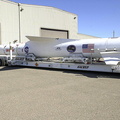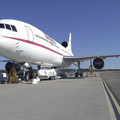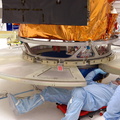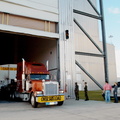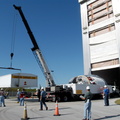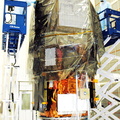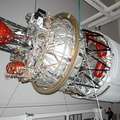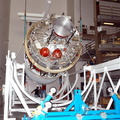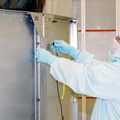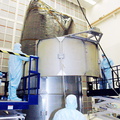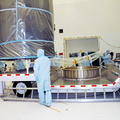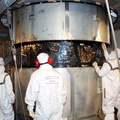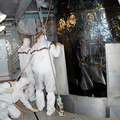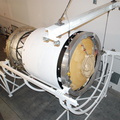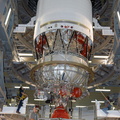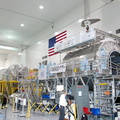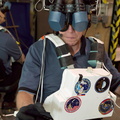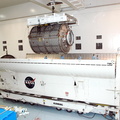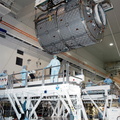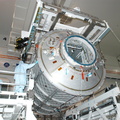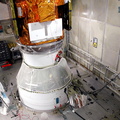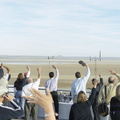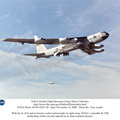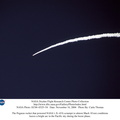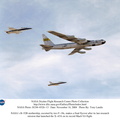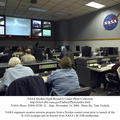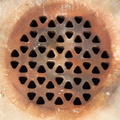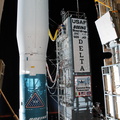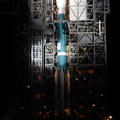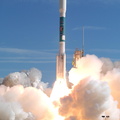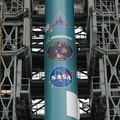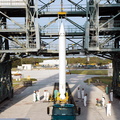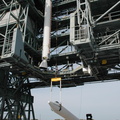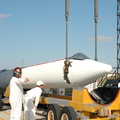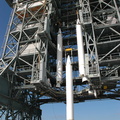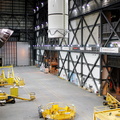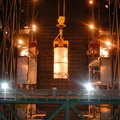
WIKIARCHIVES.SPACE
The Human Spaceflight Archive

Information
- Taken in
- Kennedy Space Center
- Author
- NASA
- Description
- On Launch Pad 17-B, Cape Canaveral Air Force Station, Fla., the third Solid Rocket Booster (SRB) of a set of three is ready to be lifted into the mobile service tower, joining two others. This is the second set of SRBs being mated to the Boeing Delta II rocket that will launch the Deep Impact spacecraft. A final set of SRBs is yet to be added. A NASA Discovery mission, Deep Impact will probe beneath the surface of Comet Tempel 1 on July 4, 2005, when the comet is 83 million miles from Earth, and reveal the secrets of its interior. After releasing an impactor on a course to hit the comets sunlit side, Deep Impacts flyby spacecraft will collect pictures and data of how the crater forms, measure the craters depth and diameter, as well as the composition of the interior of the crater and any material thrown out, and determine the changes in natural outgassing produced by the impact. It will send the data back to Earth through the antennas of the Deep Space Network.
- Created on
- Monday 29 November 2004
- Source link
- https://science.ksc.nasa.gov/gallery/photos/2004/captions/
- Visits
- 42
- Rating score
- no rate
- Rate this photo
- License
- CC BY-NC-ND
- Modified by WikiArchives
- No (original)
- Downloads
- 0
Powered by Piwigo
